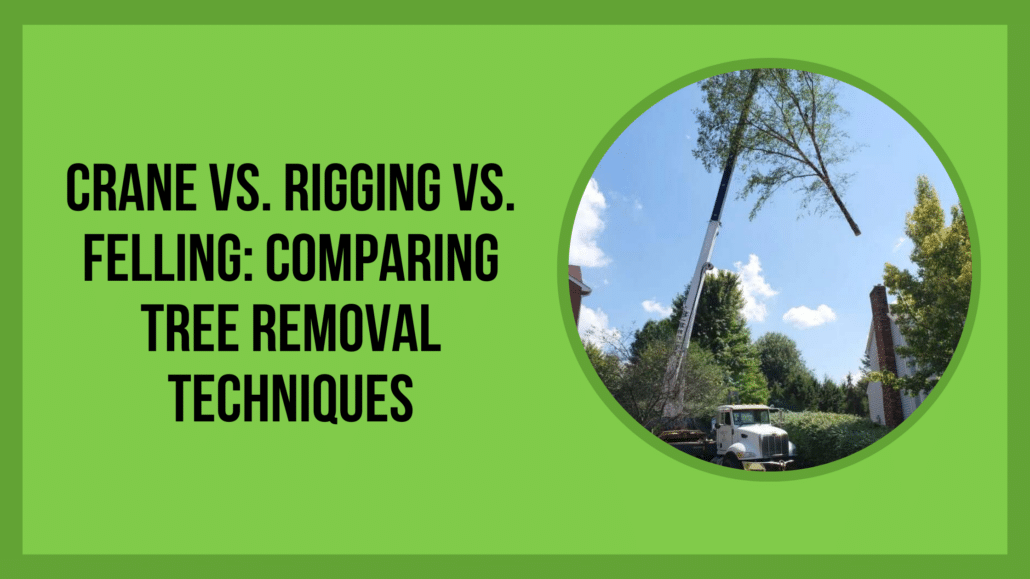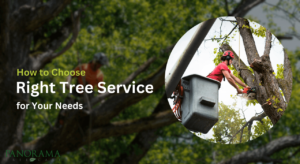When it comes to removing a tree, the technique you choose can make all the difference in safety, efficiency, and cost.
Whether it’s a towering oak in your backyard or a hazardously leaning pine threatening your property, knowing the right method—crane-assisted, rigging, or traditional felling—is key.
Let’s dive into the details of each technique and figure out which one suits your needs best.
Understanding Tree Removal Techniques
When it comes to tree removal, understanding the different techniques available can help you choose the safest and most efficient method for your needs. Each approach has its strengths and is best suited for specific situations.
Let’s take a closer look at three common tree removal methods: crane-assisted removal, rigging, and traditional felling.
Crane-Assisted Tree Removal
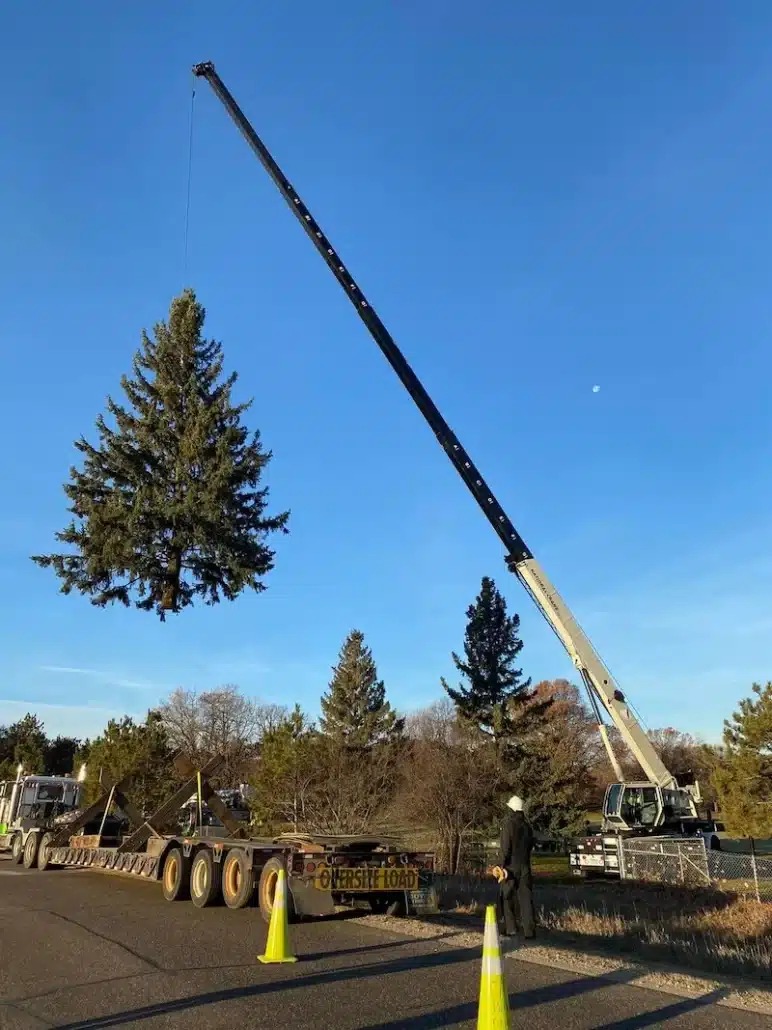
Crane-assisted tree removal is one of the most advanced techniques in the industry. It involves using a crane to lift and remove sections of a tree piece by piece.
This method is particularly effective for large trees or those situated in difficult-to-access areas, such as behind houses, near power lines, or within landscaped yards.
One of the primary benefits of crane-assisted removal is safety. Because the crane does much of the heavy lifting, workers don’t need to climb as high or handle as many physical cuts, which reduces the risk of injury.
The tree sections are carefully removed and lowered to the ground, minimizing disruption to the surrounding area. This method is especially useful for hazardous trees that may be unstable due to disease, decay, or storm damage.
Crane-assisted tree removal is also efficient. By lifting and removing large sections of the tree at once, the process can be completed much faster compared to other techniques.
This method is an excellent choice for urban or suburban properties where space is limited and precision is critical.
Rigging Tree Removal
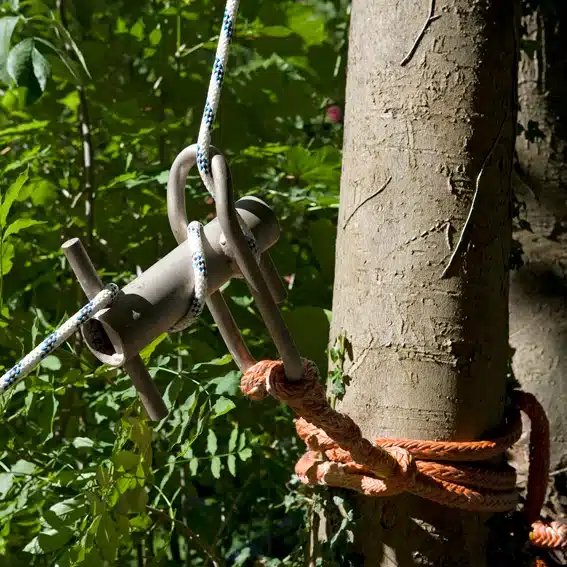
Rigging is another highly controlled and precise tree removal method. It uses a combination of ropes, pulleys, and friction devices to safely lower sections of a tree to the ground.
This technique is ideal for situations where obstacles, such as buildings, fences, or power lines, make it impossible to let tree limbs fall freely.
Rigging requires significant skill and expertise. Arborists must calculate weight distribution, control rope tension, and carefully guide each section of the tree as it’s cut and lowered.
The process ensures that every part of the tree is handled in a way that prevents damage to the property or injury to workers.
While rigging can be more time-consuming than crane-assisted removal, it’s extremely versatile. This method is suitable for medium-sized trees in tight spaces, and it provides the level of control needed for complex removals. It’s often used in residential areas where precision is a top priority.
Traditional Tree Felling
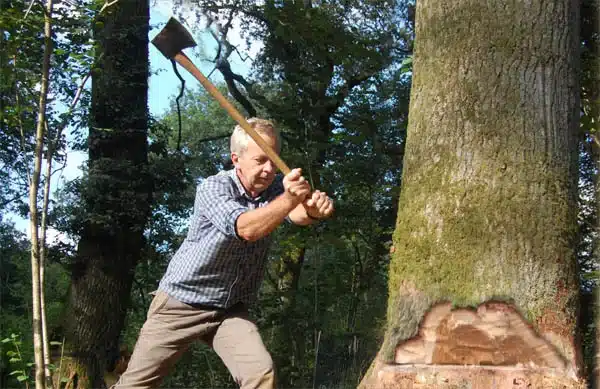
Traditional tree felling is the oldest and simplest method of tree removal. This technique involves cutting the tree at its base and allowing it to fall to the ground in one piece.
It’s most commonly used in open spaces where there is enough room for the tree to fall safely without causing damage.
This method is cost-effective and straightforward, making it a popular choice for rural or undeveloped areas. However, it does come with risks. Without proper planning and execution, the tree may fall unpredictably, potentially causing damage or injury.
It’s crucial that the tree felling is carried out by trained professionals who can assess the tree’s structure, lean, and surrounding conditions.
While traditional felling is faster than rigging and less complex than crane-assisted removal, it’s not suitable for urban settings or areas with nearby obstacles. It’s a great choice for healthy trees in open environments with clear fall paths.
By understanding these tree removal techniques, you can make an informed decision about the best method for your situation. Each technique has its advantages, and the right choice depends on factors like tree size, location, and potential hazards.
Factors to Consider When Choosing a Tree Removal Technique
Selecting the right tree removal technique isn’t just about cutting down a tree—it’s about ensuring safety, minimizing impact on your property, and achieving the best possible outcome for your specific situation.
Each method, whether crane-assisted, rigging, or traditional felling, is suited for particular scenarios. Here are the key factors to evaluate when deciding on the most appropriate technique.
Tree Size and Location
The size of the tree and where it is situated play a huge role in determining the best removal method. For instance, large trees with sprawling canopies or those located in tight spaces may require crane-assisted removal.
A crane allows for sections of the tree to be safely lifted away without the risk of branches damaging nearby structures.
Smaller or medium-sized trees, especially those with limited clearance around them, might be better suited for rigging. The precision of ropes and pulleys enables arborists to lower each cut piece to the ground without harming the surroundings.
On the other hand, for trees growing in wide-open spaces, traditional felling can be the most straightforward and cost-effective choice, as the tree can safely fall in one piece.
Proximity to Structures and Utilities
Trees near buildings, fences, power lines, or other structures require a cautious and calculated approach. Crane-assisted removal is ideal in such cases because it prevents large tree sections from falling freely, reducing the risk of damage.
Similarly, rigging is highly effective for these scenarios, allowing arborists to navigate tricky spaces with precision.
Traditional felling, while simpler, isn’t suitable for trees near obstacles. The risk of the tree falling unpredictably is too high, potentially causing harm to property or utilities.
If your tree is close to valuable infrastructure, professional techniques like rigging or crane use are almost always necessary.
Safety Concerns
Tree removal is inherently risky, with dangers ranging from falling branches to chainsaw mishaps. Each technique offers different levels of safety based on the complexity of the job. Crane-assisted removal is one of the safest options for large or hazardous trees.
Workers spend less time climbing the tree, and the crane lifts heavy sections, significantly reducing physical strain and the chance of accidents.
Rigging, while requiring skill and experience, is another controlled method that prioritizes safety. By carefully lowering sections of the tree with ropes, the potential for sudden falls or unexpected movements is minimized. Traditional felling,
however, is riskier due to the unpredictable nature of a falling tree, particularly in windy or uneven conditions. Professional assessment is essential to mitigate these risks.
Time and Efficiency
The time required for tree removal varies depending on the method and the complexity of the job. Crane-assisted removal is often the fastest technique, especially for large trees or complicated situations. The ability to lift entire sections in one go significantly speeds up the process.
Rigging, while precise, can take longer because it involves systematically lowering tree parts one by one. Traditional felling is quick in open areas but may require additional time for cleanup if the tree’s impact causes significant ground disruption or scattered debris.
Understanding how much time you have and the urgency of the removal can help guide your decision.
Cost Considerations
Budget is another important factor when choosing a tree removal technique. Traditional felling is generally the most cost-effective option because it requires less specialized equipment and labor. However, it’s only suitable for straightforward cases where safety risks are minimal.
Rigging and crane-assisted removal tend to be more expensive due to the equipment, expertise, and time required. While the upfront costs may be higher, these methods offer greater control, safety, and precision, making them worthwhile for complex jobs.
Investing in the right technique can save you money in the long run by preventing property damage and ensuring a smooth process.
Environmental and Property Impact
Consider the potential impact on your property and the surrounding environment. Crane-assisted removal and rigging are gentle on the ground, as tree sections are carefully placed instead of crashing down.
This is particularly important for landscaped yards or areas with fragile infrastructure like patios, driveways, or garden beds.
Traditional felling, while efficient in open spaces, can cause ground damage due to the full weight of the tree hitting the earth. It may also leave behind larger debris, requiring more extensive cleanup. If preserving your property’s condition is a priority, crane or rigging techniques are often the better choice.
By weighing these factors, you can select a tree removal technique that aligns with your needs, whether it’s the size and location of the tree, safety concerns, time constraints, or budget.
Consulting with professional arborists ensures the right method is chosen for your specific situation, delivering a safe and efficient outcome.
Comparative Analysis: Crane vs. Rigging vs. Felling
When deciding between crane-assisted removal, rigging, or traditional felling for tree removal, understanding the differences in safety, efficiency, environmental impact, and cost is essential.
Each technique has unique advantages and is suited to specific scenarios. Here’s a detailed comparison to help you make the best choice.
Safety
Safety is a critical factor in tree removal, as improper techniques can lead to serious injuries or property damage. Crane-assisted removal is often the safest method, especially for large or compromised trees.
With the crane taking on most of the lifting work, arborists spend less time climbing or cutting hazardous sections. This method significantly reduces the risk of falls or accidents involving unstable branches.
Rigging, while slightly more labor-intensive, is also a safe approach when handled by experienced professionals.
The use of ropes and pulleys ensures precise control over how tree sections are lowered, minimizing the chance of branches falling unpredictably. It’s especially reliable in confined spaces with obstacles.
Traditional felling, on the other hand, poses the highest safety risks. Since the entire tree is cut at its base and allowed to fall in one piece, factors like wind direction, tree lean, or hidden weaknesses can lead to unexpected outcomes.
This method requires meticulous planning and should only be performed in open areas with no nearby structures or hazards.
Efficiency
Efficiency is another crucial consideration, especially if time constraints or complex jobs are involved. Crane-assisted removal is typically the fastest method.
By lifting and removing large sections of the tree in one motion, this approach can save hours or even days compared to other techniques. It’s an excellent choice for large-scale or urgent projects.
Rigging is less time-efficient due to its methodical approach. Each piece of the tree is carefully cut, secured with ropes, and lowered to the ground, which takes time.
However, this precision often prevents additional time spent fixing damage caused by falling debris, making it a practical option for complex environments.
Traditional felling is efficient for straightforward jobs in open spaces. Cutting the tree at its base allows gravity to do the work, making it a quick process. However, cleanup after felling can take additional time, as the impact may scatter debris or damage the surrounding area.
Environmental and Property Impact
The environmental and property impact of tree removal depends heavily on the technique used. Crane-assisted removal and rigging are both designed to minimize disruption.
With crane removal, tree sections are lifted and placed directly onto the ground or a truck, leaving minimal damage to landscaping or infrastructure. Rigging offers similar benefits, as branches are lowered gently instead of crashing down.
Traditional felling, while simple, can cause significant ground impact due to the full force of the tree hitting the earth. This can leave deep impressions on lawns, damage garden beds, or disrupt paved surfaces.
In addition, scattered branches and wood may require extensive cleanup, increasing the overall impact on the property.
Cost
Cost is an important factor for most homeowners, and each method has its own price range. Traditional felling is usually the least expensive option because it requires less specialized equipment and labor.
However, it’s only viable for open areas with no nearby obstacles, limiting its applications.
Rigging is more costly due to the expertise, time, and equipment involved. The precision and control it offers justify the higher price for jobs in tight spaces or near valuable structures. Crane-assisted removal is the most expensive method, as it involves advanced machinery and skilled operators.
However, the speed, safety, and reduced property damage often make it a worthwhile investment for challenging or high-risk removals.
Use Cases
- Crane-Assisted Removal: Best for large, hazardous trees or situations with tight access, such as urban or suburban properties with nearby structures.
- Rigging: Ideal for medium-sized trees in complex environments, such as near power lines, buildings, or delicate landscaping.
- Traditional Felling: Suitable for rural or open areas where there’s plenty of space for the tree to fall without causing damage.
| Aspect | Crane-Assisted Removal | Rigging | Traditional Felling |
|---|
| Safety | Safest method; minimizes risks with precise lifting | Controlled and precise; safe near obstacles | High risk; requires clear fall path and careful planning |
| Efficiency | Fastest method; handles large or hazardous trees quickly | Slower due to step-by-step lowering of sections | Quick but cleanup and impact may add time |
| Environmental Impact | Minimal ground impact; sections are carefully lowered | Minimal property damage with controlled lowering | High ground impact; risk of scattered debris |
| Cost | Most expensive; justifies cost for safety and speed | Moderately expensive; requires expertise | Least expensive but limited to open areas |
| Best Use Cases | Large, hazardous, or difficult-to-access trees in tight spaces | Medium-sized trees near buildings or power lines | Straightforward jobs in open, rural areas |
Why Professional Expertise Matters
Tree removal is not a task to be taken lightly. It involves significant risks, specialized tools, and a deep understanding of tree biology, safety protocols, and environmental considerations.
Attempting to remove a tree without professional expertise can lead to property damage, personal injury, or even life-threatening accidents.
Here’s why hiring certified professionals is critical when it comes to tree removal.
Ensuring Safety
Tree removal is inherently dangerous, especially when working with large, compromised, or hard-to-reach trees. Certified arborists are trained to assess the risks involved, such as weak branches, hidden decay, or potential impact zones.
They use safety equipment and techniques, like rigging or crane-assisted removal, to protect both the workers and your property.
For instance, trees growing near power lines or buildings require careful planning and precision. Panorama Tree Service employs highly skilled professionals who understand these complexities and prioritize safety at every step.
This ensures the job is completed without endangering people, structures, or utilities.
Access to Specialized Equipment
Professional tree removal requires more than just a chainsaw. Depending on the tree’s size, location, and condition, specialized tools such as cranes, rigging systems, and wood chippers may be needed.
Panorama Tree Service has access to advanced machinery and the expertise to operate it efficiently, reducing risks and ensuring the job is done quickly and safely.
For large, complex jobs, we provide a heavy-duty tree removal service Tampa property owners can rely on for safety and speed.
For challenging jobs, such as trees growing in confined spaces, crane-assisted removal is often the best choice. Panorama’s team uses state-of-the-art equipment to handle even the most complex removals with precision.
Expertise in Tree Health and Structure
Not all trees need to be removed. Sometimes, trimming or other interventions can save a tree or mitigate hazards. Certified arborists at Panorama Tree Service assess the health and structure of the tree before making recommendations.
They can identify issues like disease, pests, or decay that may not be visible to the untrained eye.
If removal is necessary, their expertise ensures the process minimizes impact on the surrounding landscape.
For example, by using rigging or crane-assisted removal, Panorama professionals avoid damaging nearby plants, lawns, or hardscapes.
Compliance with Local Regulations
Tree removal may be subject to local laws and ordinances, particularly in areas with protected species or zoning restrictions. Panorama Tree Service is familiar with these regulations and ensures that every job complies with legal requirements.
This eliminates the risk of fines or legal disputes for homeowners.
Efficiency and Peace of Mind
Professional tree removal is not only safer but also more efficient. Panorama Tree Service’s experienced team can complete jobs quickly, whether it’s a large-scale crane-assisted removal or precise rigging in tight spaces.
Hiring professionals also gives you peace of mind, knowing the work is being handled by experts who prioritize safety, quality, and your satisfaction.
Why Choose Panorama Tree Service?
Panorama Tree Service is a trusted name in tree care and removal. With years of experience and a commitment to excellence, they provide tailored solutions for every situation, ensuring safety, efficiency, and customer satisfaction.
Here’s what sets them apart:
- Comprehensive Services: Panorama offers a wide range of tree care solutions beyond removal, including Tree Trimming, Stump Removal, and Mangrove Trimming.
- Expert Assessment: Their certified arborists assess each tree to determine the best removal technique, whether it’s crane-assisted, rigging, or traditional felling. They also offer advice on tree health and preservation.
- Safety First: With advanced equipment and adherence to industry best practices, Panorama ensures every job is completed safely and efficiently.
- Local Expertise: Panorama Tree Service understands local regulations and environmental considerations, making them the ideal choice for tree removal in compliance with community standards.
FAQs
Is crane-assisted tree removal safe for residential areas?
Yes, it’s one of the safest methods, especially for large or compromised trees near homes or fences.
How long does tree removal take?
The duration depends on the method and tree size. Crane removal is typically the fastest, while rigging can take more time due to its precision.
Which tree removal method is most cost-effective?
Traditional felling is usually the least expensive but only works for open spaces. Rigging and crane removal are pricier but better for safety and precision in complex scenarios.
Conclusion
Choosing the right tree removal technique—crane, rigging, or felling—depends on your unique needs, from safety concerns to environmental impact. Trust Panorama Tree Service to assess your situation and provide expert solutions that protect your property and ensure your peace of mind.
Our advanced tree removal solutions are designed for safety, efficiency, and minimal impact — no matter the tree size or site complexity.
Whether you’re dealing with a massive oak or a tree tangled in wires, we’ve got the tools and team to help. Schedule your free tree removal consultation today and let us handle the heavy lifting.

